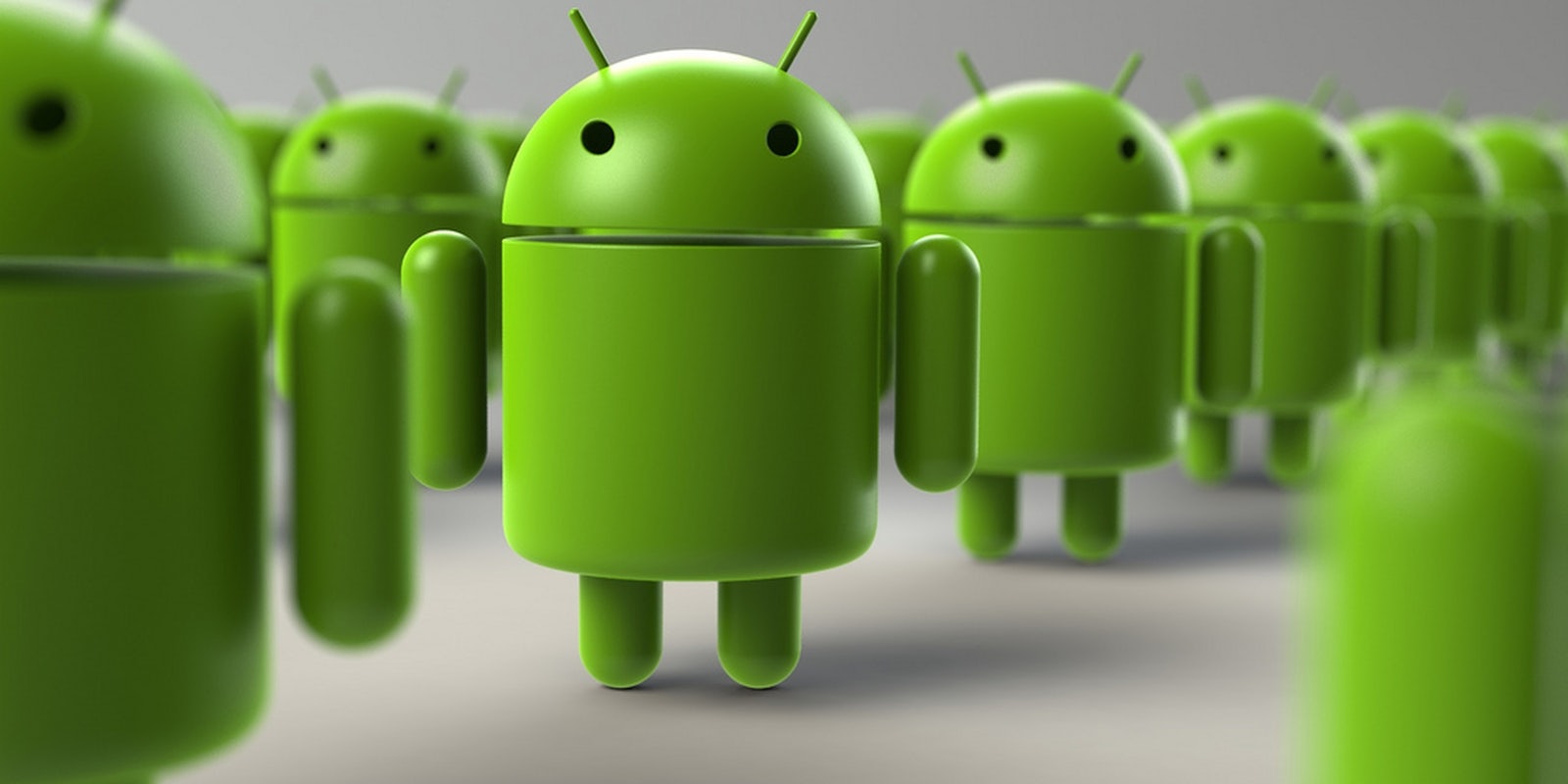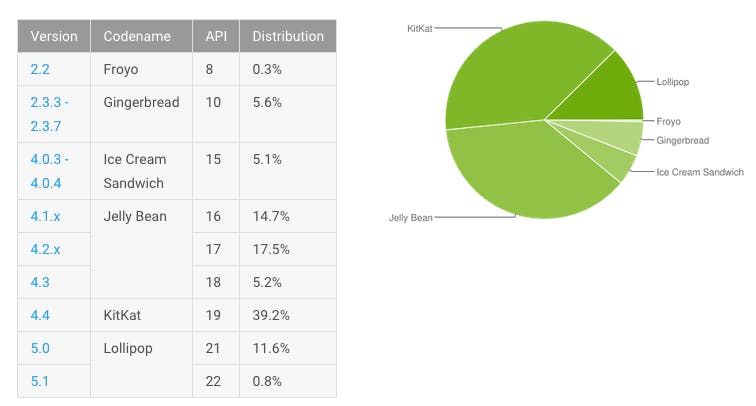Now that Google has had its chance to tell the world what it’s planning for the future of Android, the platform’s faithful begin the painful talk of waiting for the new “M” version to actually launch and for the updates to roll out. But if Google’s latest version adoption numbers are any indication, that day may never come for the vast majority of Android users.
Polling Google Play Store user visits over a seven-day period ending June 1, the data shows that fragmentation is still a huge problem for Android developers. Just 0.8 percent of users have been upgraded to Lollipop 5.1, the version of Android that was released on March 9.
That’s less than one percent adoption after approximately three months. By comparison, three months after the release of iOS 8, Apple‘s latest big update, 63 percent of users had been upgraded to the latest and greatest.
That massive difference is largely thanks to the way carriers and phone manufacturers control the rollout of Android updates. iOS users get their updates straight from Apple, while Android devices are oftentimes only given the ability to update once it goes through both the manufacturer and wireless carrier. That means that even if a phone is compatible with any given update, it could take weeks or even months before that upgrade is available.
Add to that the number of bargain-priced Android handsets that are given away with low-priced phone plans, and there’s a huge chunk of the Android market that either can’t handle new updates, or simply doesn’t have access to them.
To Apple’s credit, iOS devices are supported with new versions for years post-release, and while some features may be watered down if your iPhone is several years old, you’re likely due for an upgrade by the time that happens anyway. By contrast, when many users see the announcements being made on stage at Google I/O, they know that the phones in their pockets will literally never have a chance to see the new features in action.
Image via RGB/Flickr (CC BY SA 2.0)



